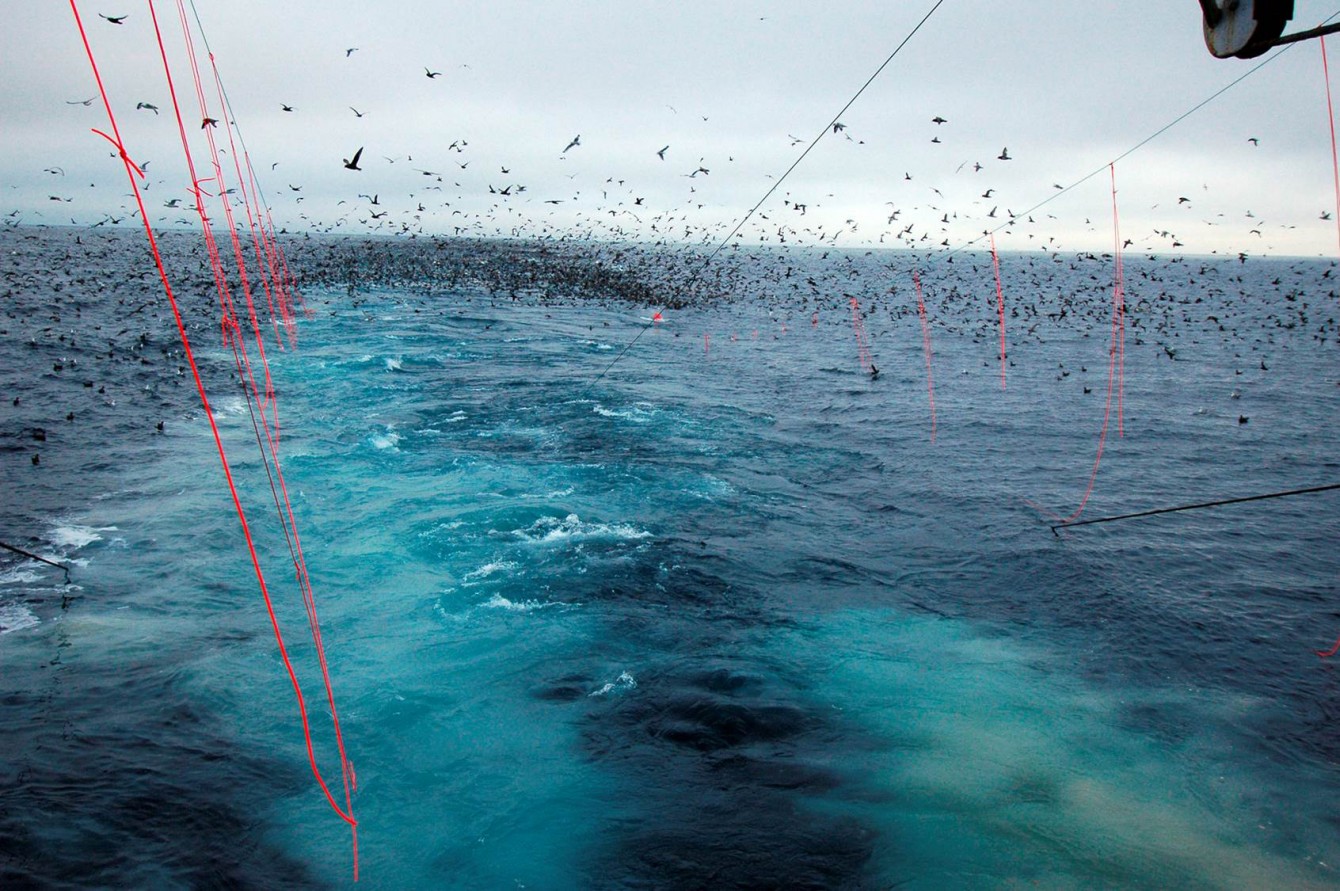 Bird Scaring Lines (BSL) are one of a number of mitigation measures available to fishers to reduce risks to seabirds from fishing operations; photograph by Ed Melvin
Bird Scaring Lines (BSL) are one of a number of mitigation measures available to fishers to reduce risks to seabirds from fishing operations; photograph by Ed Melvin
Fisheries New Zealand is seeking feedback on proposed changes to the mandatory seabird mitigation measures for commercial fishers using surface longlining (SLL) in New Zealand waters. Details of the proposed changes to the mitigation measures are contained in the consultation document, Review of the Fisheries (Seabird Mitigation Measures – Surface Longlines) Circular 2019.
The proposals come after a review of the current regulations contained in the Fisheries (Seabird Mitigation Measures – Surface Longlines) Circular 2019 in which Fisheries New Zealand found low uptake of voluntary mitigation measures and little compliance to discharge management practices.
New Zealand is considered a seabird hotspot, with several species of albatrosses and petrels endemic to the country. Twelve seabirds, all ACAP-listed species, were identified in the review as most at risk from SLL fisheries including Antipodean, Gibson’s and Salvin’s albatrosses.
By law, commercial fishers in New Zealand waters using the surface longlining method must implement certain mitigation measures to reduce risks to seabirds. The current regulations stipulate that during setting, fishers must either:
- use hook-shielding devices on all hooks, or
- deploy a legal tori (streamer) line (or Bird Scaring Line), and either set at night, or line weight to legal specifications.
In addition to the mandatory regulations there are a number of voluntary measures which SLL operations can adopt including the use of bird scaring lines (also known as a tori line), line weighting, and night setting. Employing all of these measures simultaneously, known as "three out of three" or using hook-shielding devices, aligns with ACAP’s Best Practice Advice for seabird mitigation in SLL fisheries.
The consultation by Fisheries New Zealand is seeking feedback on potential changes to the circular which will better align it with the voluntary measures set out in the mitigation standards.
The options proposed in the consultation are as follows:
- Option 1: Regulatory status quo.
- Option 2: Mandate additional "best practice" seabird mitigation measures.
- Option 3: Spatial/temporal use of "three out of three" (or hook-shielding devices).
- Option 4: Mandate "three out of three" (or hook-shielding devices) at all times.
Submissions can be made to Fisheries New Zealand on the proposed changes detailed in the Consultation Document via email at,
Surface Longline Circular Review 2023 Fisheries Management
Fisheries New Zealand
Private Bag 12031
Tauranga 3143
The deadline for submissions is 5pm 28 April 2023. All infornation, including the review and consulation documents are available here.
21 April 2023

 Español
Español  English
English  Français
Français